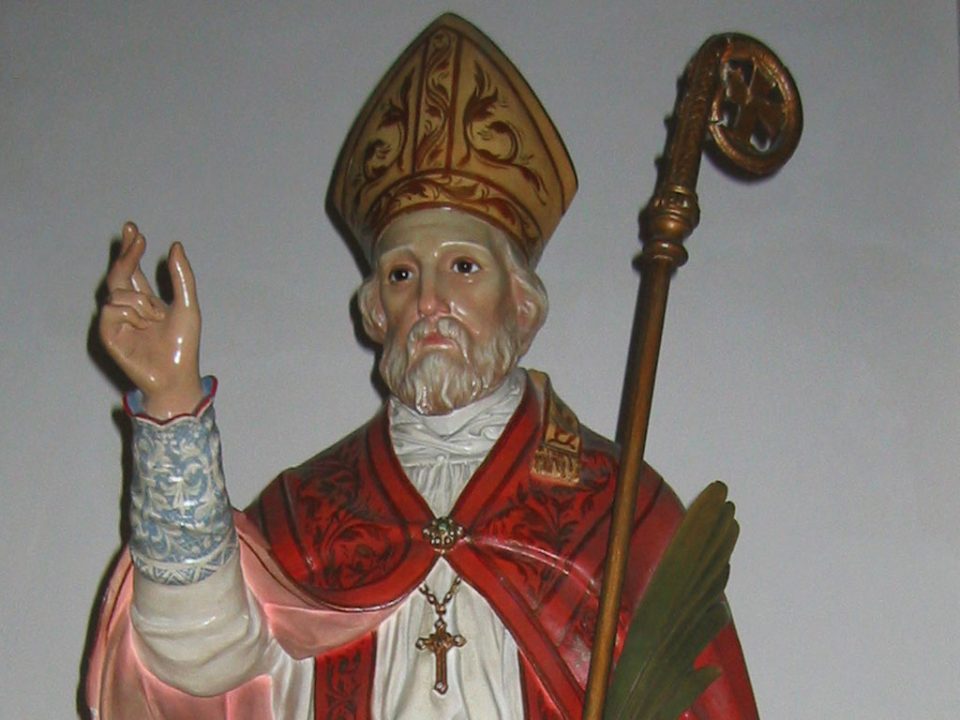Valentine's day and its pagan origins

When Valentine's Day looms on the horizon, many people start thinking about love. Did you know that modern Valentine's Day, even if it takes its name from a martyr saint, actually has its roots in an ancient pagan custom? Let's take a look at how Valentine's Day has evolved from a Roman festival to the marketing giant it is today.
Did you know?
The Valentine's Day party may have evolved from a Roman love lottery, held around the time of the Lupercalia.
The holidays were revised when Christianity took hold and was renamed for Valentine's Day.
Around 500 AD, Pope Gelasius decided that a lottery of saints was more devoted than selecting potential love partners from a jar.
Lupercalia love lottery
Drawing of the pastoral festival of Lupercalia
February is a great time of year to be in the greeting card or chocolate heart industry. This month has long been associated with love and romance, dating back to the days of the beginning of Rome. At the time, February was the month when people celebrated Lupercalia, a festival in honor of the birth of Romolo and Remo, the founding twins of the city. As Lupercalia evolved and time passed, it turned into a festival in honor of fertility and the arrival of spring.
According to legend, young women would put their names in an urn. Eligible men would draw a name and the couple would mate for the rest of the festival, and sometimes even longer. As Christianity progressed in Rome, the practice was disparaged as pagan and immoral, and suppressed by Pope Gelasius around 500 AD. There has recently been an academic debate about the existence of the Lupercalia lottery - and some people believe it may not exist at all - but it's still a legend reminiscent of the ancient matchmaking rituals perfect for this time of year!
A more spiritual celebration
More or less in the same period in which the love lottery was eliminated, Gelasius had a brilliant idea. Why not replace the lottery with something a little more spiritual? He changed the lottery of love into a lottery of saints; instead of pulling the name of a beautiful girl from the urn, the young people pulled the name of a saint. The challenge for these bachelors was to try to be more like saints in the coming year by studying and learning the messages of their individual saint.
Who was Valentino, anyway?
While trying to convince the young nobleman of Rome to be more holy, Pope Gelasius also declared Valentine's Day (more about him soon) the patron saint of lovers, and his day would be held every year on February 14th There is some question about who Valentine's Day really was; he may have been a priest during the reign of Emperor Claudius.
The legend is that the young priest, Valentine, disobeyed Claudio by performing wedding ceremonies for young men, when the emperor preferred to see them tied to military service rather than marriage. While in prison, Valentine fell in love with a girl who visited him, perhaps the jailer's daughter. Before being executed, he would send her a letter, signed, From your Valentine. Nobody knows if this story is true, but it certainly makes Valentine's Day a romantic and tragic hero.
The Christian church had difficulty maintaining some of these traditions and for a while Valentine's day disappeared from radar, but during the Middle Ages the lover's lottery regained popularity. The young chivalry mated with the women and wore their lover's names on their sleeves for a year. Indeed, some scholars blame poets like Chaucer and Shakespeare for the evolution of Valentine's Day in today's celebration of love and romance. In a 2002 interview, Professor Steve Anderson of Gettysburg College said it wasn't a big deal until Geoffrey Chaucer wrote the Parliament of Fowls, where all the birds on earth gather on Valentine's Day to mate with their companions for life.
“[Gelasius] hoped that the first Christians would celebrate their romantic traditions a day earlier and dedicate them to the saint rather than to the Roman goddess of love Juno ... the day of the festival blocked, but the romantic holiday did not ... Unlike Pope Il the day of Gelasio's feast, Chaucer's "lovebirds" took off ".
Modern Valentine's Day
Around the end of the 18th century, Valentine's Day cards began to appear. Small brochures were published, with sentimental poems that young people could copy and send to the object of their affections. In the end, the printers learned that there was a profit to be made with prefabricated cards, complete with romantic images and love-themed verses. The first American Valentine's Day cards were created by Esther Howland in the 1870s, according to the Victorian treasure. In addition to Christmas, more cards are exchanged on Valentine's Day than at any other time of the year.